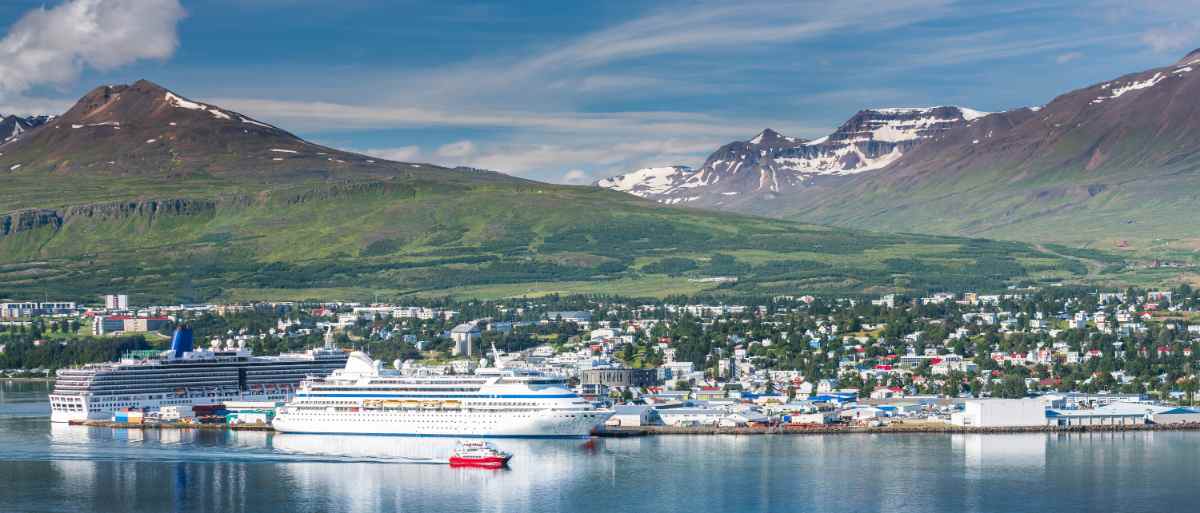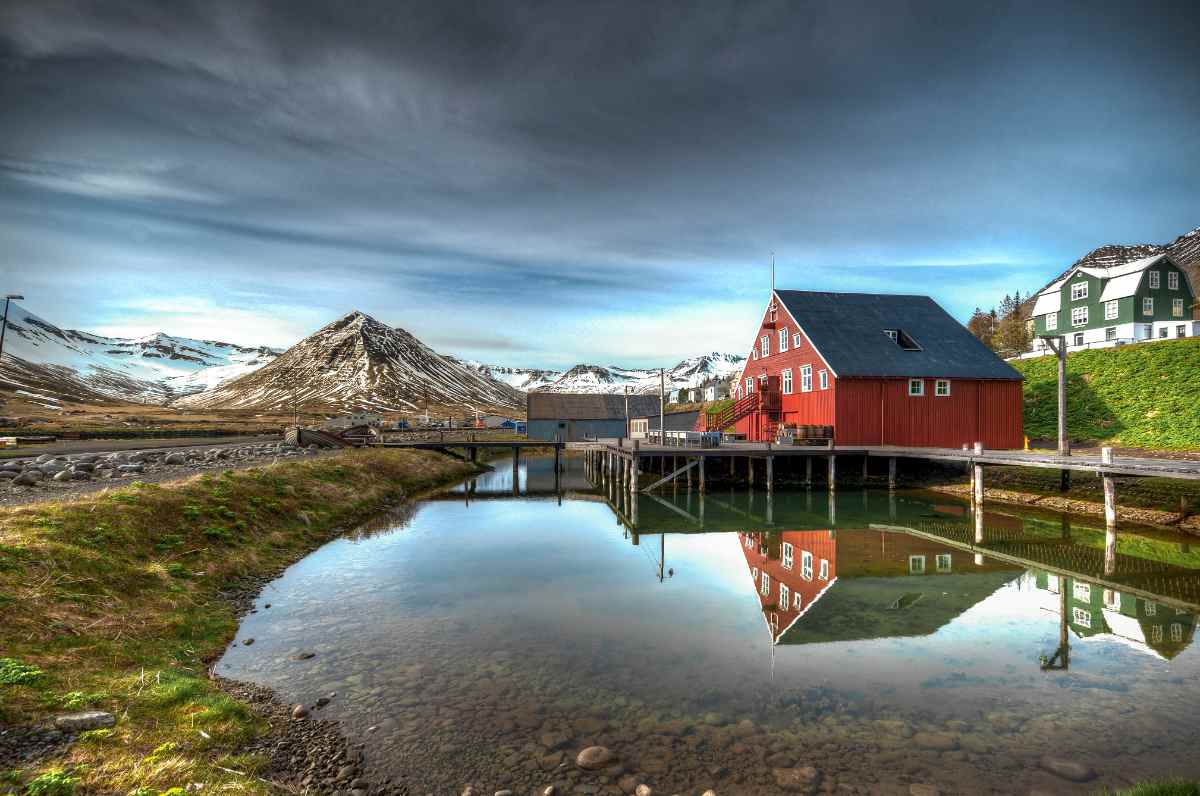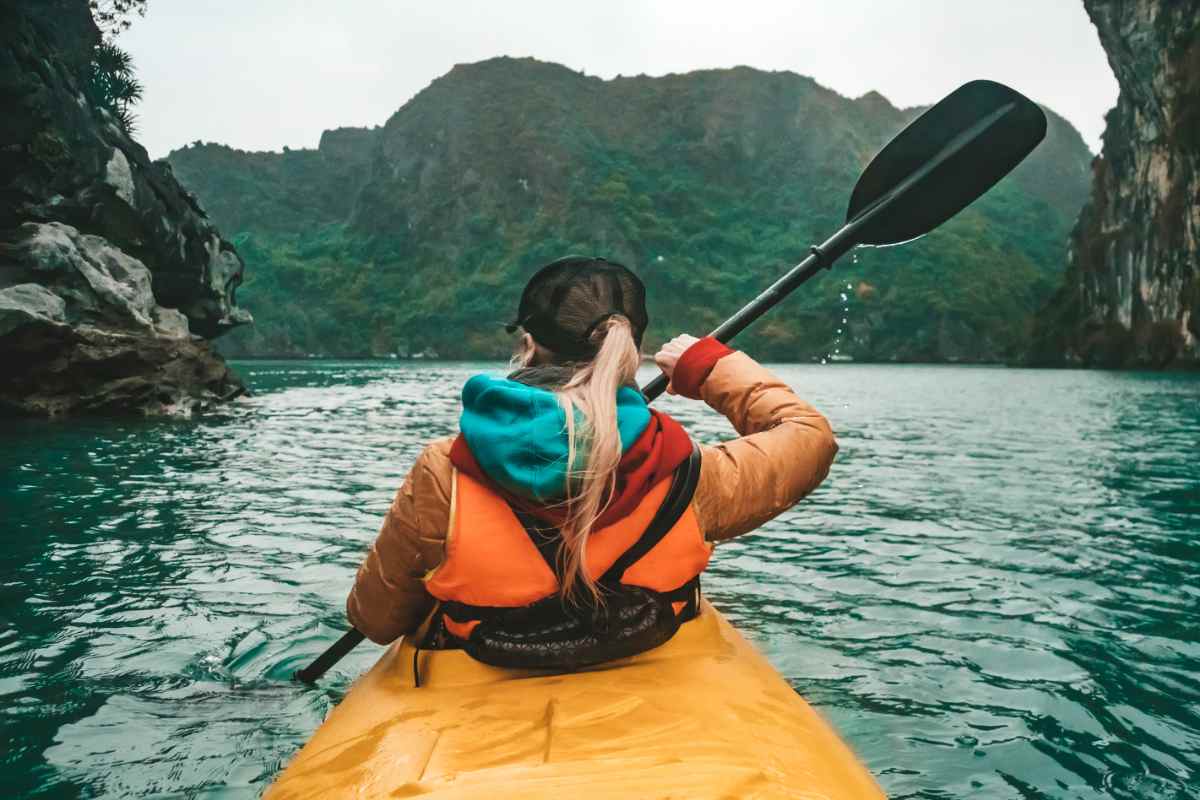19-05-2023

Welcome to our comprehensive guide to North Iceland! This beautiful region offers diverse landscapes, outdoor adventures, and unique cultural experiences. From majestic waterfalls to geothermal wonders, northern Iceland has something for everyone. In this guide, we'll share everything you need to know to plan your perfect trip, including the best time to visit, how to get there, top attractions, and practical tips. Whether you're looking to explore the north coast of Iceland or indulge in a beer spa in North Iceland, we've got you covered. So buckle up and get ready to travel North Iceland like a pro!
North Iceland's weather is known for its unpredictability, with conditions that can change rapidly throughout the day. In general, the region experiences cool summers with average temperatures around 10-15°C (50-59°F) and cold winters with temperatures often below freezing. Precipitation varies, with the coastal areas receiving more rain and snow than the inland regions. The Northern Lights, a natural phenomenon that attracts many visitors, are visible from late August to mid-April, with peak activity occurring during the winter months.
When planning your trip to North Iceland, it's essential to consider the best time to visit. The region offers different experiences depending on the season.
This is the most popular time to visit northern Iceland, as you'll enjoy long days with nearly 24 hours of sunlight, mild temperatures, and lush green landscapes. Summer is perfect for hiking, whale watching, and visiting popular attractions like Lake Mývatn and Dettifoss. Keep in mind that this is also the peak tourist season, so be prepared for larger crowds and higher prices.

If you prefer fewer crowds and more affordable prices, autumn is a great option. The landscape is adorned with vibrant fall colors, and you may even catch a glimpse of the Northern Lights. However, be prepared for cooler temperatures and shorter daylight hours.

Northern Iceland in winter offers a unique experience, with snow-covered landscapes and the chance to see the Northern Lights. Many outdoor activities, such as skiing and snowmobiling, are popular during this time. However, the weather can be challenging, with limited daylight hours and potentially hazardous driving conditions.

Spring is another shoulder season with fewer tourists, longer daylight hours, and gradually improving weather conditions. This is an excellent time for birdwatching and exploring the region before the summer crowds arrive.

There are several ways to reach North Iceland, depending on your preferences and budget.
The quickest way to reach North Iceland is by flying into Akureyri Airport (AEY), the region's main airport. Domestic flights from Reykjavik take approximately 45 minutes and are operated by Air Iceland Connect. Alternatively, you can fly into Húsavík Airport (HZK) if you're planning to start your journey in the whale watching capital of Iceland.
Renting a car in Iceland offers flexibility and allows you to explore the region at your own pace. Reykjavik Auto offers a wide range of vehicles suitable for your needs. The drive from Reykjavik to Akureyri takes around 4-5 hours, depending on the route and stops you make along the way.

If you prefer public transportation, you can take a bus from Reykjavik to various destinations in North Iceland. The Strætó bus company operates several routes, including a direct service to Akureyri. Keep in mind that bus schedules may vary depending on the season, and travel times are generally longer than driving.
Explore some of the most remarkable sites in North Iceland. From geothermal wonders to majestic waterfalls, this region is sure to leave you in awe.
Often referred to as the "Capital of the North," Akureyri is the largest town in North Iceland and serves as an ideal base for exploring the region. This charming town offers a variety of attractions, including the Akureyri Church, the Akureyri Botanical Gardens, and a lively arts and culture scene.

One of the North Iceland highlights, Lake Mývatn is a stunning geothermal area known for its unique geological formations, diverse birdlife, and hot springs. Don't miss the chance to visit the Mývatn Nature Baths for a relaxing soak in a natural geothermal pool.

Húsavík, often called the "Whale Watching Capital of Iceland," is a picturesque fishing town famous for its whale watching northern Iceland tours. With a high probability of spotting whales, including humpback, minke, and blue whales, a visit to Húsavík is a must for wildlife enthusiasts.

Dettifoss, Europe's most powerful waterfall, is a breathtaking sight that shouldn't be missed. The waterfall is located in Vatnajökull National Park, and there are well-maintained hiking trails to both the east and west banks of the falls, offering different viewpoints.

Also known as the "Waterfall of the Gods," Goðafoss is a beautiful and easily accessible waterfall located along the Ring Road. The waterfall played a significant role in Iceland's history, as it is where the country's conversion to Christianity was symbolically marked by throwing pagan idols into the falls.

This striking horseshoe-shaped canyon, located in Vatnajökull National Park, is said to have been formed by the hoofprint of Odin's eight-legged horse, Sleipnir. Ásbyrgi Canyon offers several hiking trails, ranging from short walks to full-day treks, allowing you to explore the area's diverse flora and fauna.

Grímsey Island, situated 40 km off the north coast of Iceland, is the only part of the country that crosses the Arctic Circle. Accessible by ferry or air, the island is home to a small community and a large population of seabirds, including puffins. A visit to Grímsey is perfect for those seeking a unique and remote destination.

Siglufjörður, a picturesque fishing village nestled between steep mountains and the ocean, was once the center of Iceland's herring industry. Today, visitors can learn about its fascinating history at the Herring Era Museum and enjoy the vibrant cultural scene, including music events and art galleries.

The Diamond Circle is a 260-kilometer (162-mile) tourist route that connects some of the most stunning attractions in North Iceland. The circle includes sites like Húsavík, Ásbyrgi Canyon, Dettifoss, and Lake Mývatn. Following this route is an excellent way to explore the diverse landscapes and highlights of the region.
Discover the thrilling adventures that await in North Iceland. Whether you're an adrenaline junkie or a nature lover, there's something for everyone.
North Iceland offers a variety of hiking trails, catering to all levels of experience. From the easy walk around Lake Mývatn to the more challenging hikes in Vatnajökull National Park, there are plenty of options for those looking to explore the region on foot.

Experience the Icelandic landscape on horseback with a guided tour. Icelandic horses are renowned for their unique gait, the tölt, which offers a smooth and comfortable ride. Several tour operators in North Iceland provide horseback riding experiences suitable for beginners and experienced riders alike.

During the winter months, snowmobiling tours provide an adrenaline-pumping way to explore northern Iceland's snowy landscapes. Tours are available on various glaciers and mountain ranges, offering breathtaking views and an unforgettable experience.

North Iceland is home to several ski resorts, such as Hlíðarfjall near Akureyri, which offer excellent skiing and snowboarding conditions during the winter months. Whether you're a beginner or an experienced skier, the resorts cater to all levels and even provide rental equipment and lessons.

For adventure seekers, river rafting in North Iceland is a thrilling experience. The glacial rivers offer exciting rapids and stunning canyon landscapes. Arctic Rafting and Viking Rafting are two popular companies that provide guided tours suitable for various skill levels.

During the winter months, ice caving tours provide a unique opportunity to explore the breathtaking world beneath Iceland's glaciers. North Iceland is home to several glaciers, such as Vatnajökull, where guided ice caving tours are available. Be sure to book with a reputable company, as exploring ice caves without a guide can be dangerous.

Don't miss the opportunity to embark on a whale watching northern Iceland tour while in Húsavík. Many tour operators, like North Sailing, offer unforgettable experiences, with knowledgeable guides and a high success rate in spotting various whale species.

Immerse yourself in the rich history and culture of North Iceland. From fascinating museums to traditional cuisine, experience the unique Icelandic heritage.
North Iceland is rich in culture and history. Akureyri's museums, such as the Akureyri Museum and the Sigurhæðir Museum, showcase the region's history and art. In Húsavík, the Whale Museum and the Exploration Museum are must-visit destinations for those interested in learning about whales and Iceland's exploration history.

While in North Iceland, don't miss the opportunity to try traditional Icelandic dishes like hákarl (fermented shark), skyr (a yogurt-like dairy product), and kleinur (a type of twisted donut). Local restaurants and cafés offer delicious Icelandic cuisine, often using fresh, locally sourced ingredients.

North Iceland hosts various festivals and events throughout the year, celebrating local culture, music, and art. Some popular events include the Akureyri Art Summer, the Húsavík Whale Festival, and the Vaka Folk Arts Festival. Check local event calendars to see what's happening during your visit.
Find the perfect place to rest and recharge after a day of exploring. We'll guide you through the various accommodation options available in North Iceland.
There is a range of hotels available in North Iceland, from luxury options like Icelandair Hotel Akureyri to more budget-friendly choices. Hotels often provide amenities like on-site restaurants, free Wi-Fi, and private bathrooms, ensuring a comfortable stay.
Guesthouses are a popular accommodation option in northern Iceland, offering a cozy atmosphere and personalized service. Many guesthouses provide private rooms with shared bathrooms and common areas, making them an excellent choice for budget-conscious travelers.
Hostels in North Iceland, such as Akureyri Backpackers, provide affordable accommodation for travelers on a budget. With dormitory-style rooms and shared facilities, hostels are a great way to meet fellow travelers while keeping costs low.

For nature lovers and those seeking a more rustic experience, camping is a popular choice during the warmer months. Many campgrounds are available throughout North Iceland, often with facilities like showers, toilets, and cooking areas. Remember to follow the Icelandic Camping Regulations and practice Leave No Trace principles to preserve the environment.
Get the insider tips and advice for a smooth and enjoyable trip. From safety information to currency and transportation, we've got you covered.
While traveling in North Iceland, it's essential to prioritize safety. Keep an eye on weather forecasts and road conditions, especially during the winter months. In case of emergency, dial 112 for assistance. The SafeTravel website offers valuable safety advice and resources for travelers in Iceland.
The currency in Iceland is the Icelandic króna (ISK). Credit and debit cards are widely accepted, even in small towns and remote areas. However, it's a good idea to carry some cash for emergencies or in case of card issues. ATMs are available in larger towns, but may be scarce in rural areas.

When planning your travel to North Iceland, consider renting a car in Keflavik airport for the greatest flexibility. Make sure to follow Icelandic traffic laws, and if you're traveling during winter, be prepared for potentially icy roads.
For those relying on public transportation, buses are available, but schedules may be limited, especially outside of peak tourist seasons.
Icelandic weather can be unpredictable, so it's crucial to pack layers and waterproof clothing. Even during the summer months, temperatures can be cool, especially at night. For northern Iceland in winter, warm clothing, insulated footwear, and hats and gloves are essential.
When driving in North Iceland, be aware of possible gravel roads, single-lane bridges, and blind hills. Ensure you have a suitable vehicle for the terrain, and always carry a map or GPS device. In the winter, roads may be icy or snow-covered, so take extra precautions and consider renting a 4x4 vehicle.

Get inspired by our suggested itineraries for your North Iceland adventure. Choose from a 3-day getaway to a 7-day immersion, tailored to suit every traveler's needs.
We hope this comprehensive guide to North Iceland has inspired you to plan your unforgettable journey to this breathtaking region. Whether you're seeking adventure, relaxation, or cultural experiences, there's something for everyone in northern Iceland.